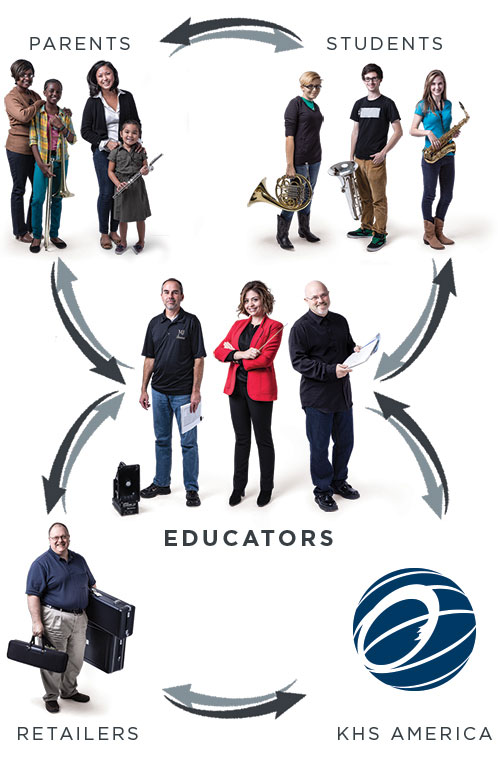Of all the ensemble performance skills we need to teach, blend has to number among the most important. Look at any adjudication form, and there it will be. We can all agree on how important it is in shaping the sound quality of our ensembles. Each of us come up with ways to address it in rehearsals and we are vigilant in our efforts to remind our students when their blend goes awry. How often do we lamentingly say “blend” as they are playing, in an effort to correct their sound quality? On the surface that would seem a wonderfully educational approach. However, over the years I’ve noticed an odd thing: when we do that, almost instantly, the result of our admonition is that the ensemble just gets softer. It seems that each player’s kneejerk reaction is to assume that it must be their tone that is sticking out, so they figure that the safest bet is to just play softer. Before checking to see if their tone quality is the problem, or whether their specific part should be louder or softer, they simply just jump to the conclusion that they need to get softer. I doubt this is thought-out or intentional, but it sure seems to be true. And the sum of them all doing that is a reduction in overall volume. Now in some moments that might be a good thing, but left uncorrected, it will undoubtedly diminish the overall dynamic spectrum we hope to achieve. If our goal is to have a beautiful, blended, characteristic tone at every volume level, we must stay aware of that tendency and work to help our students correct for errors in blend without necessarily changing the overall composite volume of the ensemble. Yes, that is easier to say than to do, but nonetheless crucial to the success of their performance.
Peter Loel Boonshaft, Director of Education
KHS America
The content of this Blog article or Banded Story is the intellectual property of the author(s) and cannot be duplicated without the permission of KHS America and/or the author(s). Standard copyright rules apply.



 We look forward to the evolution of this exciting program, and welcome feedback on how we can further enhance the work that you do in music education.
We are excited to offer your program the opportunity to join the KHS America Academic Alliance today.
We look forward to the evolution of this exciting program, and welcome feedback on how we can further enhance the work that you do in music education.
We are excited to offer your program the opportunity to join the KHS America Academic Alliance today.